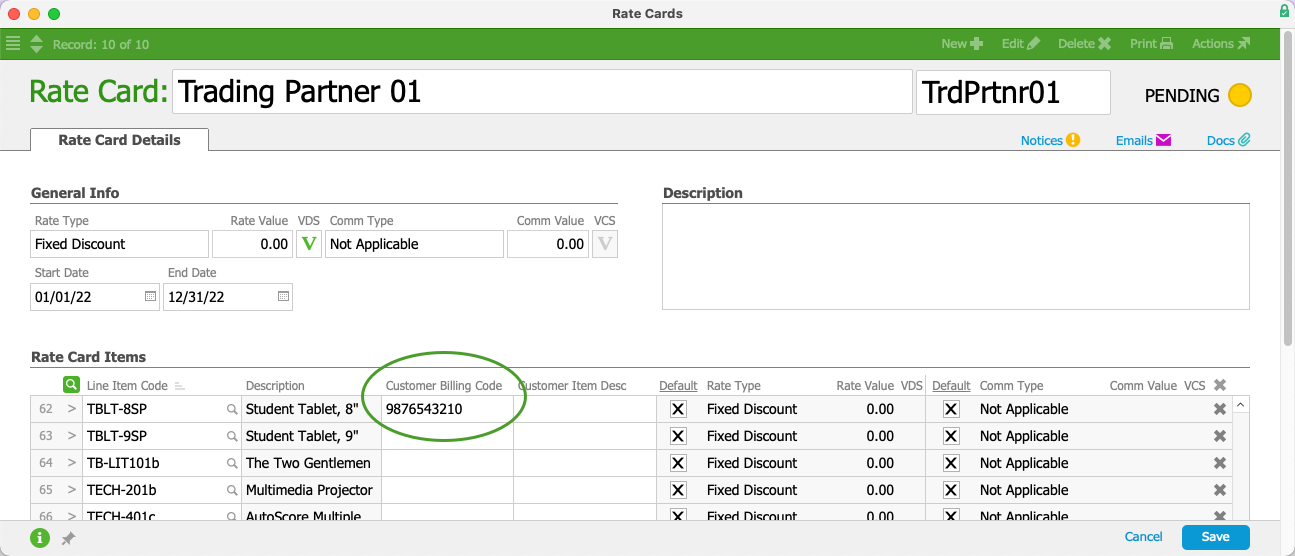This guide explains the steps to configure your aACE system for integration with EDI services. It is intended for system administrators.
Before configuring your system for the aACE+ EDI integration to transfer information with trading partners, you should understand aACE's EDI functionality.
Steps for EDI Integration
For your aACE+ EDI integration, proceed with the following steps:
- Install the EDI integration file
- Create a company record for each trading partner
- Create a rate card for each trading partner
- Configure case quantities
- Configure courier services
- Onboard trading partners
1. Installing the EDI Integration File
Obtain a copy of the integration file from aACE Support, then install it on your system.
2. Creating Company Records for Trading Partners
Each trading partner must have a Customer-type company record in aACE. Whenever possible, the company abbreviation should match the EDI provider's ID for that trading partner.
Navigate to the eCommerce Integration file settings related to the appropriate EDI provider. Map the trading partner's data in the EDI Partners section. Flag only the XML documents that are required by that trading partner.
3. Creating Rate Cards for Trading Partners
Each trading partner must have a rate card in aACE. The main purpose for this rate card is to map that trading partner's product codes.
For correct EDI processing, the ID codes for products must match. On a trading partner's rate card, the Customer Billing Code field for each item should be the product code from that trading partner.

The rate card only needs to include information about LICs that the trading partner will be ordering.
4. Configuring LIC Case Quantities
Any LIC that you will be selling to a trading partner in cases must have data for the Case Qty field.
EDI orders often specify case quantities. aACE needs this data to convert that quantity to the correct number of units.
5. Configuring Courier Services
Each courier service that any trading partner will use must be recorded on the EDI Integration settings. This includes the Standard Carrier Alpha Code (SCAC) for that courier service.
The SCAC is an identification used by the transportation industry to identify freight carriers in computer systems and on shipping documents. You can typically search online to find a courier service's SCAC.
6. Onboarding Trading Partners
After your aACE system is prepared, you can begin the process to onboard and test exchanges with your trading partners. While the initial EDI set up is relatively straightforward, the onboarding and testing process can be very involved. Be sure to set expectations and schedule sufficient time for this effort.